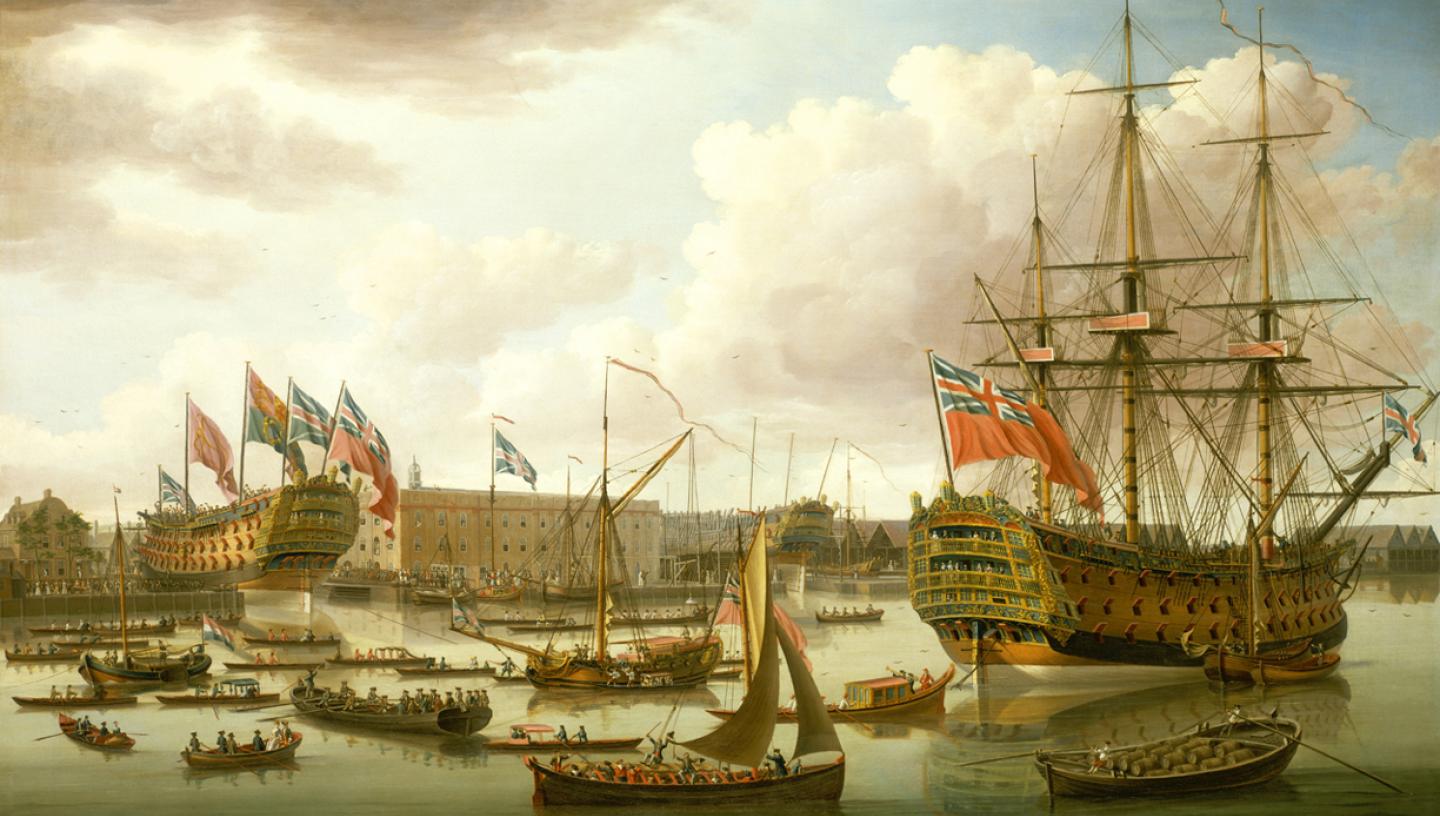
Toll for the brave, the curious sinking of the Royal George
Toll for the brave – the story of the Royal George and how it went down in a home port with huge loss of life.
Toll for the brave-
The brave! that are no more
All sunk beneath the wave
Fast by their native shore
William Cowper
William Cowper's poem commemorates the accidental loss of the Royal George at Spithead in 1782. The Royal George was a first-rate ship of the line launched in 1756. The first warship to exceed 2,000 tons burden, Royal George was commissioned at the start of the Seven Years' War with France and joined the Western Squadron in blockading the port of Brest and Quiberon Bay.
In August 1782, she was in Portsmouth loading provisions and ammunition for the relief of Gibraltar when the crew noticed a small leak, which necessitated heeling the ship to undertake repairs.
As the crew unloaded a considerable weight onto the store ship alongside, the rocking motion sent water slopping into the gunports, the covers of which had been left open. The ship went over and nearly 900 people were drowned.
The dead included Rear-Admiral Richard Kempenfelt and as many as 300 women and 60 children who were visiting the ship at the time, prior to their husbands and fathers departing Britain’s shores. It was reported that all of the children but one lost their lives. A single little boy survived by clinging on to a sheep.
A subsequent court-martial acquitted the ship's officers and crew (most of whom were dead) of any wrongdoing. They blamed the accident on the 'general state of decay of her timbers'. This reflected badly on the Navy Board, who were responsible for the ship’s condition.
There were various ingenious attempts to raise the whole wreck but they all failed. In 1834, the pioneering diver John Deane recovered 30 guns before his work was interrupted to investigate a nearby wreck that turned out to be Mary Rose. The remains of Royal George continued to pose a risk to ships passing through Portsmouth harbour until in 1839 Colonel Charles William Pasley blew up the remains.
Relics and timber were brought to the surface and many souvenirs were manufactured from her wood and metal for sale to the public.